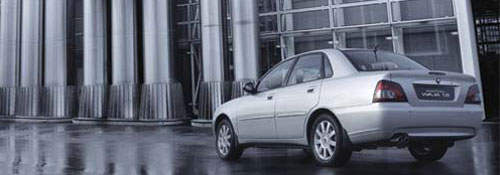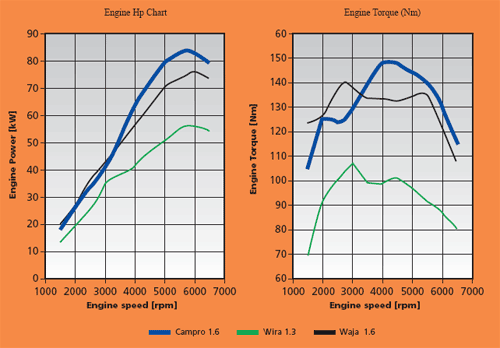
I’m sure many of you know about the new Proton Waja that’s going to be released soon (I heard today!) with a Campro engine instead of the Mitsubishi 4G18 that was found in the original Proton Waja. Let’s look at the differences between the two engines.
The Proton S4PH Campro is an inline 4 cylinder 16 valve Double Overhead Camshaft engine. Performance stats are 110hp at 6000rpm and 148Nm of torque at 4000rpm. One look at the stats would give you a slight idea of the torque curve for this engine. With the peak torque coming in at a relatively high RPM, this engine is meant to be a high revver for spirited driving. Gen2 owners have mentioned the torque actually rises, then dips a little at the 3000-4000rpm range before going up again to the maximum 148Nm of torque at 4000rpm.
On the other end of the ring, we have the 4G18. The Mitsubishi 4G18 is an inline 4 cylinder 16 valve Single Overhead Camshaft engine. It makes 102 horsepower at 6000rpm and 140Nm of torque at 2750rpm. Big amounts of torque at low revs is a typical characteristic (not all the time though) of SOHC engines, making it a nice and stressless drive in city driving situations.

Unless Proton retunes the Campro to readjust the torque curve for more torque at lower RPMs, I think the Waja Campro is going to be a sluggish drive as you’d have to rev pretty high all the time to get decent acceleration. Even Gen2 owners are complaining, and the Waja is a 1205kg car, abit heavier than the Gen2’s 1190kg.
Looking to sell your car? Sell it with Carro.











AI-generated Summary ✨
Comments on "Waja Campro vs Waja 4G18" express optimism about Proton adopting the Campro engine, with hopes it will improve performance and reduce costs. Some appreciate the move as a step forward, although concerns about engine power, fuel consumption, and quality persist. A few criticize the Campro’s rev-happy nature and argue that existing engines like Mitsubishi's are still preferred. There is discussion on safety features such as ABS and airbags, with calls for them to be standard. Overall, sentiments range from hopeful anticipation of better performance and safety to skepticism about quality, engine performance, and Proton’s management decisions. Off-topic political and economic debates are filtered out, focusing instead on the technical and practical implications for the Waja.